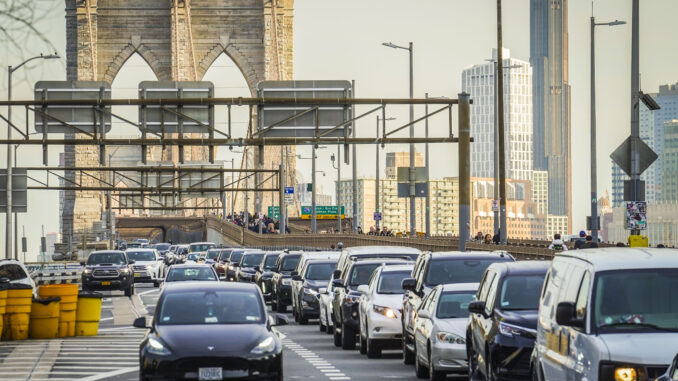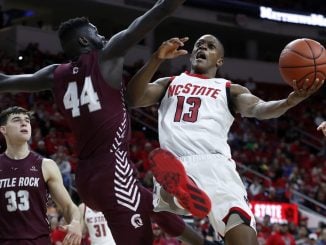
NEW YORK — New York’s new toll for drivers entering the center of Manhattan debuted Sunday, meaning many people will pay $9 to access the busiest part of the Big Apple during peak hours.
The toll, known as congestion pricing, is meant to reduce traffic gridlock in the densely packed city while also raising money to help fix its ailing public transit infrastructure.
“We’ve been studying this issue for five years. And it only takes about five minutes if you’re in midtown Manhattan to see that New York has a real traffic problem,” Metropolitan Transportation Authority Chair and CEO Janno Lieber told reporters late Friday after a court hearing that cleared the way for the tolls.
“We need to make it easier for people who choose to drive, or who have to drive, to get around the city.”
The cost to drivers depends on what time of the day it is and if drivers have an E-ZPass, an electronic toll collection system that’s used in many states.
Most drivers with E-ZPasses will get dinged the $9 fee to enter Manhattan south of Central Park on weekdays between 5 a.m. and 9 p.m. and on weekends between 9 a.m. and 9 p.m. During off hours, the toll will be $2.25.
That’s on top of tolls drivers pay for crossing various bridges and tunnels to get to the city in the first place, although there will be a credit of up to $3 for those who have already paid to enter Manhattan via certain tunnels during peak hours.
On Sunday morning, hours after the toll went live, traffic moved briskly along the northern edge of the congestion zone at 60th Street and 2nd Avenue. Some motorists appeared unaware that the newly activated cameras, set along the arm of a steel gantry above the street, would be charging them a $9 fee.
“Are you kidding me?” said Chris Smith, a resident of Somerville, New Jersey, as he drove against traffic beneath the cameras, avoiding the charge. “Whose idea was this? Kathy Hochul? She should be arrested for being ignorant.”
Phil Bauer, a surgeon who lives just above 60th Street, said he was hopeful the program would lessen the bottlenecks and frequent honking that comes from the nearby bridge connecting Manhattan and Queens.
“I think the idea would be good to try to minimize the amount of traffic down and try to promote people to use public transportation,” he said. “The Queensboro Bridge is pretty brutal.”
President-elect Donald Trump, a Republican, has vowed to kill the program when he takes office, but it’s unclear if he will follow through. The plan had stalled during his first term while it waited on a federal environmental review.
In November, Trump, whose namesake Trump Tower is in the toll zone, said congestion pricing “will put New York City at a disadvantage over competing cities and states, and businesses will flee.”
“Not only is this a massive tax to people coming in, it is extremely inconvenient from both driving and personal booking keeping standards,” he said in a statement. “It will be virtually impossible for New York City to come back as long as the congestion tax is in effect.”
Other big cities around the world, including London and Stockholm, have similar congestion pricing schemes, but it is the first in the U.S. Proponents of the idea note the programs were largely unpopular when first implemented, gaining approval as the public felt the benefits.
In New York City, even some transit riders voiced skepticism of a plan intended to raise much-needed funds for the subway system.
“With my experience of the MTA and where they’ve allocated their funds in the past, they’ve done a pretty poor job with that,” said Christakis Charalambides, a supervisor in the fashion industry, as he waited for a subway in Lower Manhattan. “I don’t know if I necessarily believe it until I really see something.”
The toll was supposed to go into effect last year with a $15 charge, but Democratic Gov. Kathy Hochul abruptly paused the program before the 2024 election, when congressional races in suburban areas around the city — the epicenter of opposition to the program — were considered to be vital to her party’s effort to retake control of Congress.
Not long after the election, Hochul rebooted the plan but at the lower $9 toll. She denies politics were at play and said she thought the original $15 charge was too much, though she had been a vocal supporter of the program before halting it.


